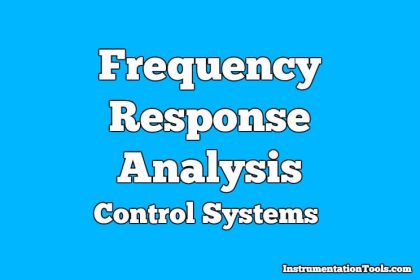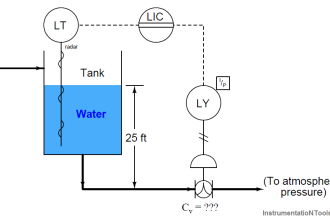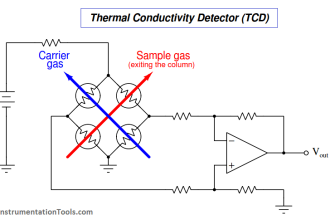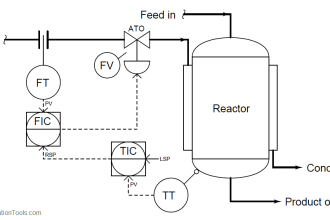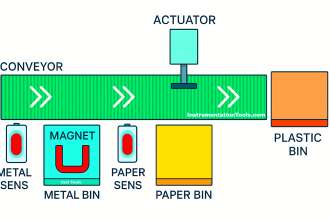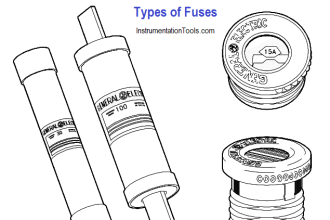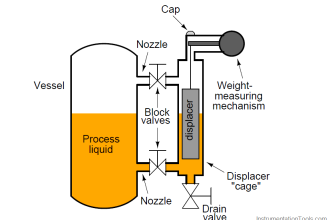Compensation Techniques
1. Assertion (A): The closed loop stability can be determined from the poles of an open loop system and the polar plot of the frequency response.
Reason (R): Unstable system has right half poles.
a) Both A and R are true and R is correct explanation of A
b) Both A and R are true and R is not correct Explanation of A
c) A is True and R is false
d) A is False and R is true
Answer: b
Explanation: Closed loop system can be made stable if the poles of the closed loop system are all lying on the left half of the plane and this can be determined from the poles of an open loop system.
2. The open loop control transfer function of a unity feedback system is given by : G(s) =K/(s+2)(s+4)(s^2+6s+25) Which is the value of K which causes sustained oscillations in the closed loop system?
a) 590
b) 790
c) 990
d) 1190
Answer: a
Explanation: The value of the sustained oscillations is calculated from the Rout-Hurwitz table by equation the quadratic equation=0.
3. The characteristic equation of the control system is s5+15s4+85s3+225s2+274s+120=0 . What are the number of roots of the equation which lie to the left of the line s+1 = 0?
a) 2
b) 3
c) 4
d) 5
Answer: c
Explanation: The solution is obtained with the help of the Routh-Hurwitz table and in this the solution is obtained by equating the value as s-1 in the given equation.
4. The characteristic equation of a system is 2s5+s4+4s3+2s2+2s+1=0 . Which one of the following is correct?
a) Stable
b) Marginally stable
c) Unstable
d) Oscillatory
Answer: c
Explanation: The solution is obtained by using the Routh-Hurwitz table in which with the conventional method the number of sign changes are seen in the first row of the table and number of sign changes is equal to the number of the roots on the right half of s plane.
5. The characteristic equation of a control system is given by s5+s4+2s3+2s2+4s+6=0. The number of the roots of the equation which lie on the right half of s-plane:
a) 0
b) 1
c) 2
d) 3
Answer: c
Explanation: The solution is obtained by using the Routh-Hurwitz table in which with the conventional method the number of sign changes are seen in the first row of the table and number of sign changes is equal to the number of the roots on the right half of s plane.
6. Which of the following may result in instability problem?
a) Large error
b) High selectivity
c) High gain
d) Noise
Answer: c
Explanation: High gain results in instability problem and this is due to the low damping factor and damping factor is inversely proportional to the gain of the system.
7. For what values of K does the polynomial s4+8s3+24s2+32s+K=0 have roots with zero real parts?
a) 10
b) 20
c) 40
d) 80
Answer: d
Explanation: The solution is obtained by using the Routh-Hurwitz table and in which with the conventional method the number of sign changes are seen in the first row of the table and number of sign changes is equal to the number of the roots on the right half of s plane.
8. How many roots with positive real parts do the equation s3+s2-s+1=0 have?
a) 0
b) 1
c) 2
d) 3
Answer: c
Explanation: The roots with positive real parts are calculated with the help of the routh-hurwitz table and since the sign changes two times in first column therefore have two roots have positive parts.
9. Phase margin is always positive for stable feedback system?
a) True
b) False
Answer: a
Explanation: Phase margin is calculated at the gain cross over frequency at which the gain is 1 and this is calculated for stability and is always positive for stable feedback system.
10. In closed loop control system, what is the sensitivity of the gain of the overall system, M to the variation in G?
a) 1/1+GH
b) 1/1+G
c) G/1GH
d) G/1+G
Answer: a
Explanation: The sensitivity of the control system is defined as the change in the output to the change in the input and senstivity of the gain of the overall system, M to the variation in G is 1/1+GH.

